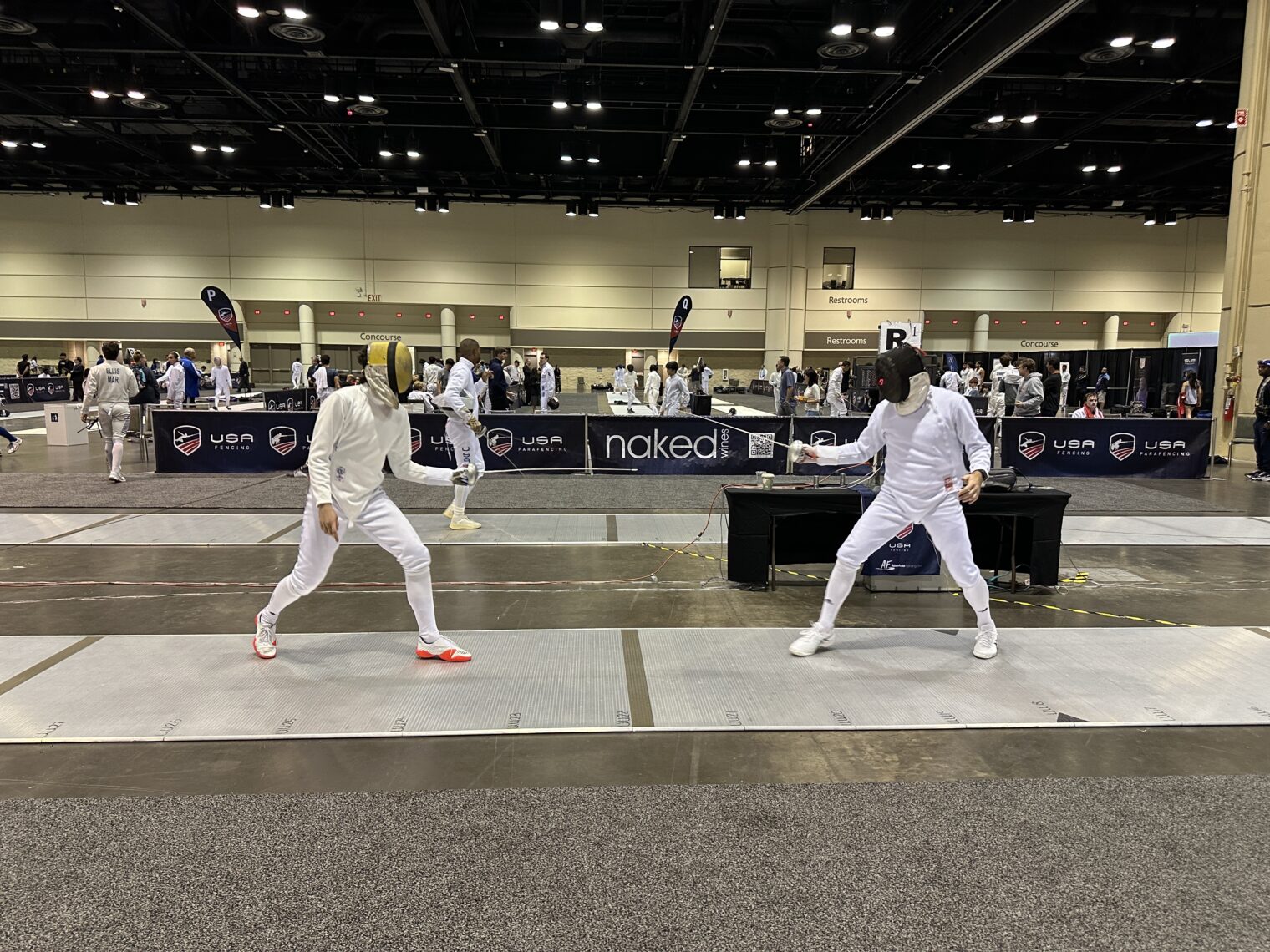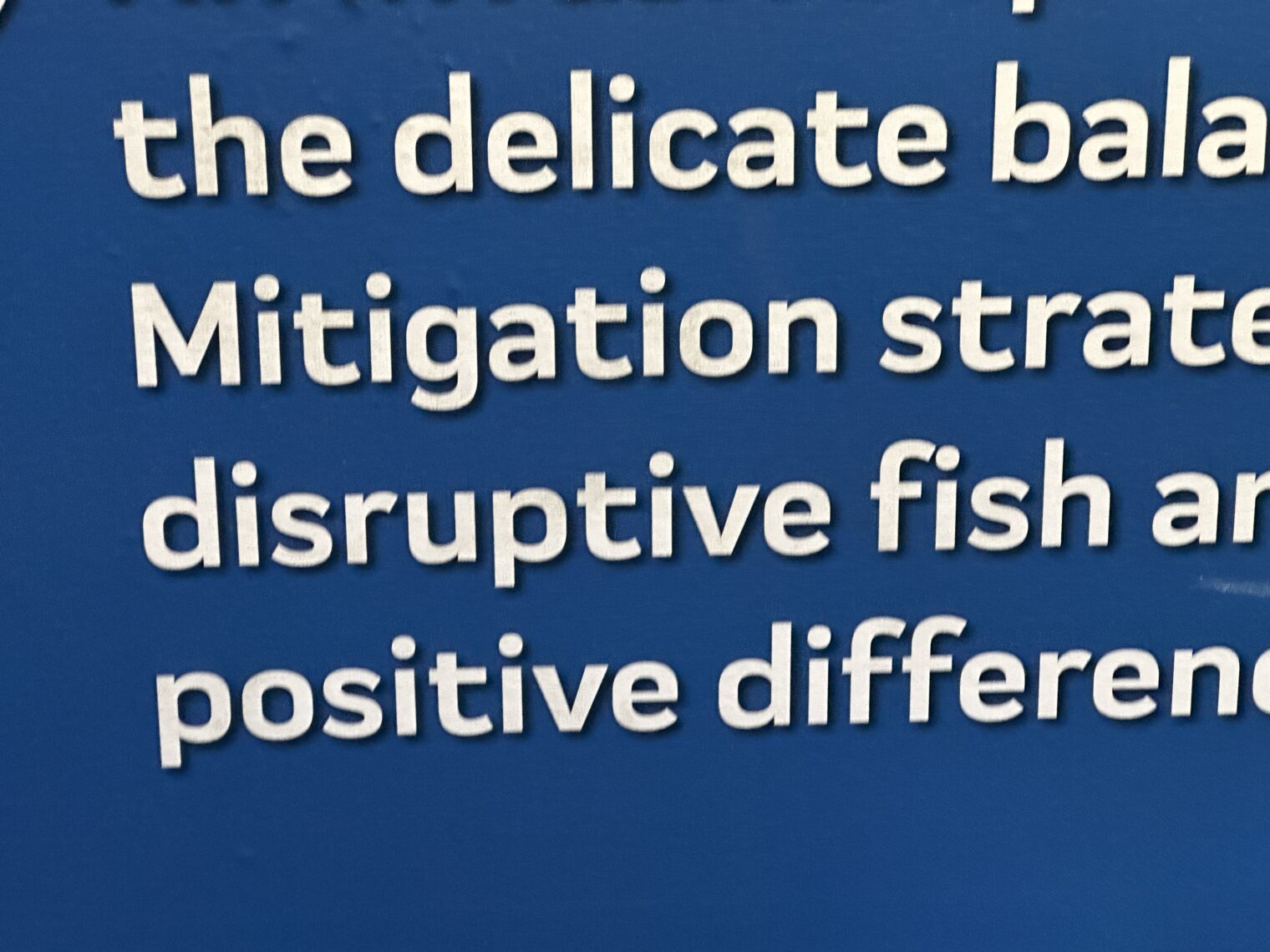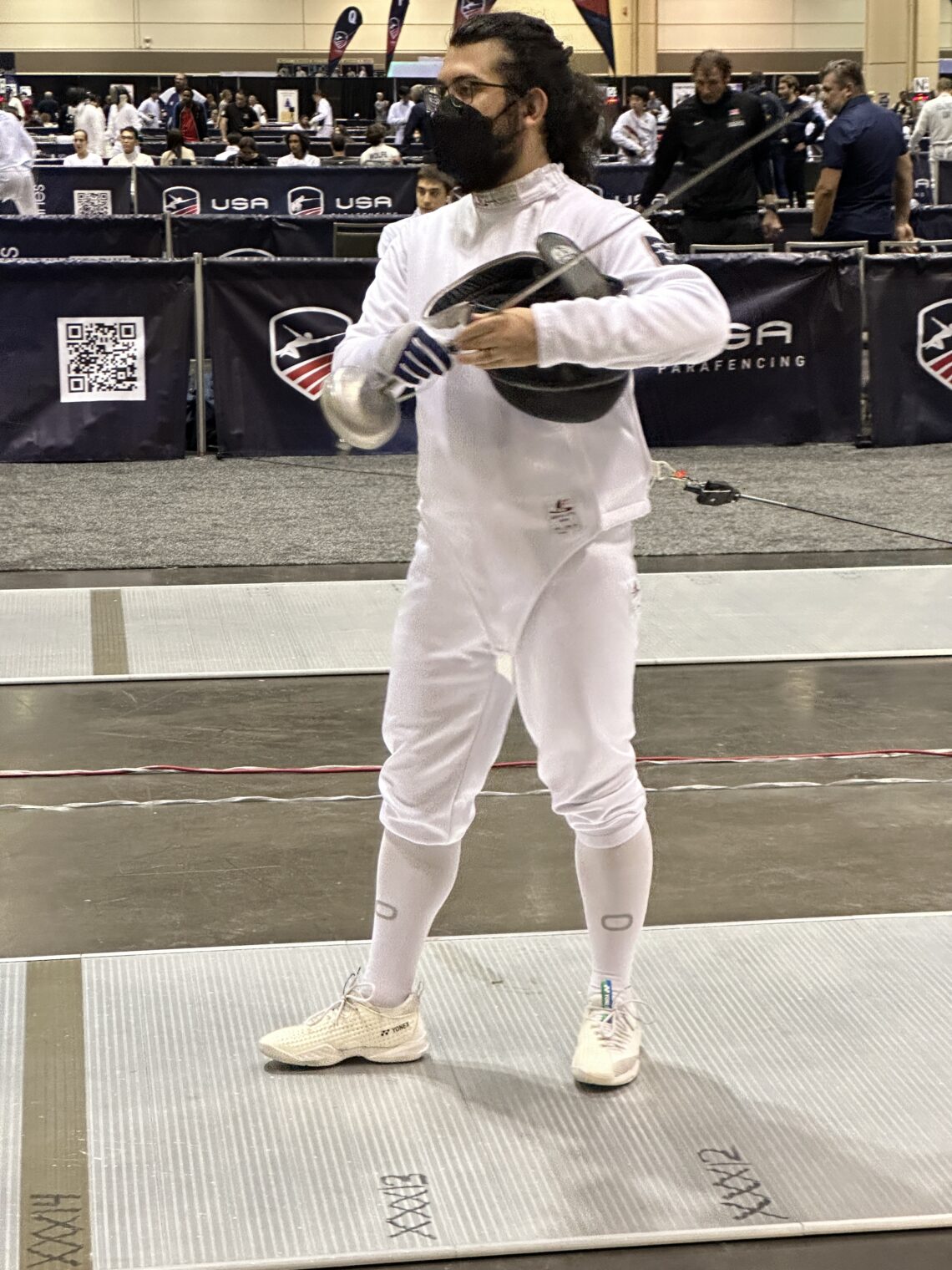I was recently sentenced to being a spectator at the USA Fencing October North American Cup, held in Orlando’s convention center (America’s 2nd largest, after Chicago’s). In épée, one scores a point by touching one’s opponent anywhere. The tip of the sword responds to pressure. You could score a point by touching the ground or your own foot, for example. Each competitor’s épée is attached to a retractable wire tether. The competitors go back and forth on a conductive mat. If the sword tip is touched to the mat, that does not register a point (but touching just to the side of the mat, unless the ref notices, will score a point). If you think that your friend has just scored a point, having advanced dramatically with sword pointed at the opponent’s body, almost surely he/she/ze/they has just lost a point.


My friend refuses to accept the limitations of age and was mixing it up with college students. He was thus eliminated after a few hours. His main reason for traveling to Orlando, however, was for the kids, both in high school. The event was packed with Chinese- and Indian-American families anxious to get their cherished offspring into elite universities. What are their chances? “A boy needs to be ranked in the top 20 nationally to get into a decent college,” my friend said, “while a girl can get in by being anywhere in the top 40.” Why the difference? “A lot of colleges have women’s fencing programs, but not men’s. This is so that they can keep their Title IX balance when they have a football team, for example, for which only men are good enough.” He cited Tufts, Brown, and Cornell as examples of schools with no men’s fencing (a larger list). Here’s an excerpt of a federal form:
(Note the gender binarism on parade! Athletes count only if they identify as either “men” or “women”.)
Reflecting the sport’s center of gravity being in the Northeast, USA Fencing went all-in on forced masking and forced vaccination. They formerly required proof of Covid-19 vaccination and then proof of booster shots for the fit teenagers who were competing (at a time when the injections were not FDA-approved, but only emergency use authorized) and also for the middle aged parents who wanted to enter the venue as spectators. Everyone within the venue had to wear a basic mask and competitors had to wear masks under their fencing masks. Coronapanic was great for my friend’s kids. While their competitors lost a year due to fencing clubs being shut down, they were being trained in their 3-car garage by their dad, a world-class fencer in his youth. (Coronapanic also helped their relative academic ranking. Their education continued uninterrupted while comparatively poor kids in big Democrat-run cities lost 12-18 months.)
Despite masks now being optional, I was able to find an example of dressing to defend oneself against a virus armed with a sword:
Note that #Science told this fencer to wear a full beard in addition to the (now-voluntary) mask.
Although everyone at the competition whom I met resided in the U.S., those who were immigrants from foreign countries would usually have a country affiliation other than “USA” on their back, e.g., “MAR” for Morocco (Maroc). Players from The Country That Shall Not Be Named were required to sign papers denouncing Vladimir Putin and the Russian military in order to compete. They would then appear without a country affiliation on their backs.
Circling back to the college admissions angle, think about the parental investment required for this gambit: years of driving to a local fencing club several times per week and weekends devoted to competitions multiple states away. All in hopes that one’s son can reach the Top 20 or that one’s daughter can reach the Top 40. Note that a non-Asian athlete will usually have an advantage over an equally-ranked Asian fencer. Coaches have found that a lot of the pushed-hard-through-high-school Asian kids quit fencing early in their college careers, saying “my parents want me to focus on getting into medical school.” The non-Asians have been more likely to stick with the sport.
How about getting your flu and Covid-19 vaccines at the event? Nothing could have been easier. The event had been going for about 16 hours when I stopped to check. Given a crowd of people with a track record of doing absolutely anything that the government tells them to do, the pair below had injected… two people (one every 8 hours).
What else was happening? I stopped on the way up at Bok Tower Gardens, a truly magnificent
We were staying at the Hilton next to the convention center, so I took my friend, pumped full of Advil, to SeaWorld across the street as a cultural experience.
You can celebrate Pride together with Shamu:
SeaWorld reminds visitors that immigrant lionfish are “disruptive” and the term “non-native” is used in a pejorative manner.



(I’m not sure that it can be blamed on the mass immigration of lionfish, but Interstate 4 between Disney World and Orlando was subject to traffic jams at all hours of the day and night (e.g., at 10 pm). Congested as the roads are with 2.7 million people in the metro area, the population is expected to grow by 75 percent between now and 2060.)
I also took my fencing friend to Disney Springs. The M&M store:









Because of Title IX, there are very few university athletic slots for males in obscure sports, according to The OSQ, since most of the slots will be taken by the large team sports of football, baseball and basketball. So many colleges have eliminated male swimming programs for example. Probably track too — much less something like fencing. Women had it better up till males were permitted to compete with them by identifying as female. So I guess the sweet spot would be a mediocre male identifying as a woman.
Blog commenting is the best way to get into an elite college. As far as lions know, the only competitive admissions are professional schools. For an undergrad degree, just go to a community college for a year & transfer.